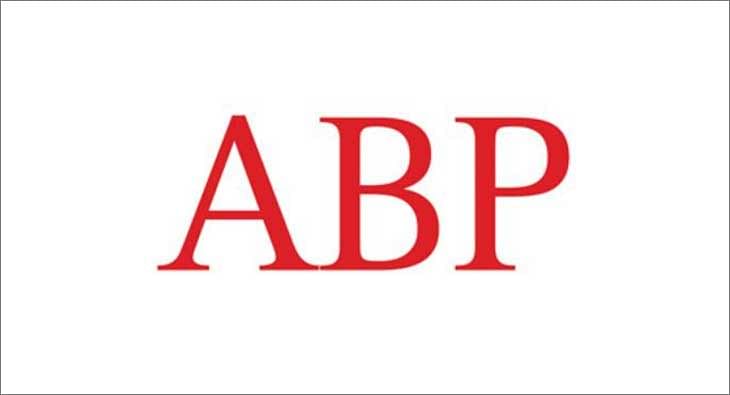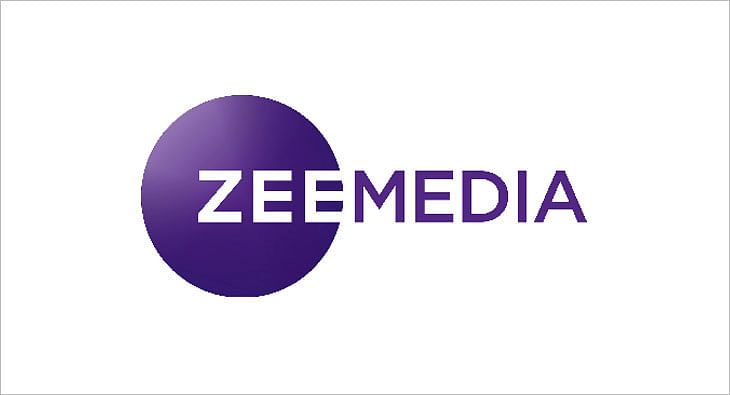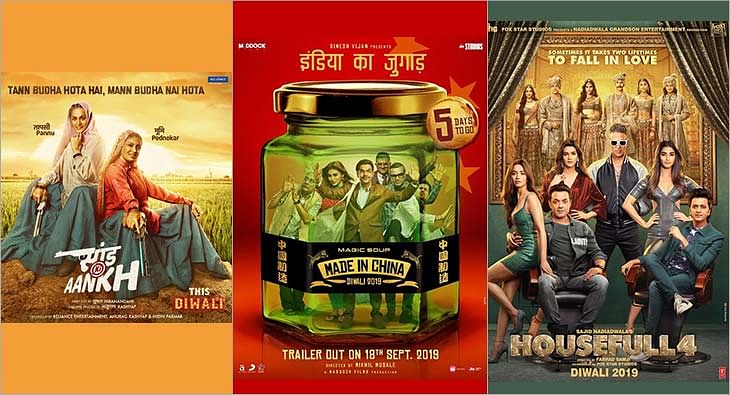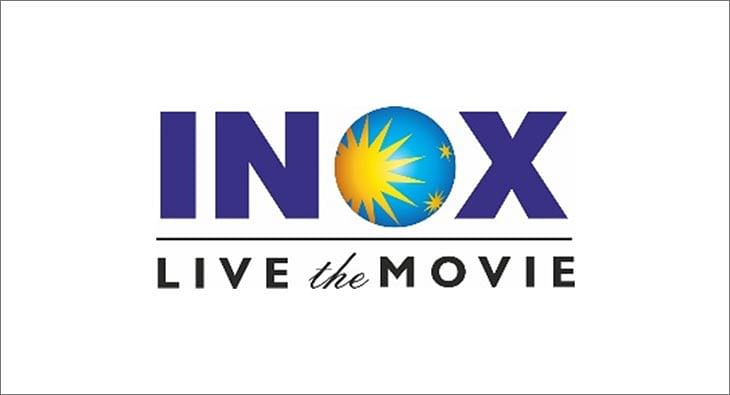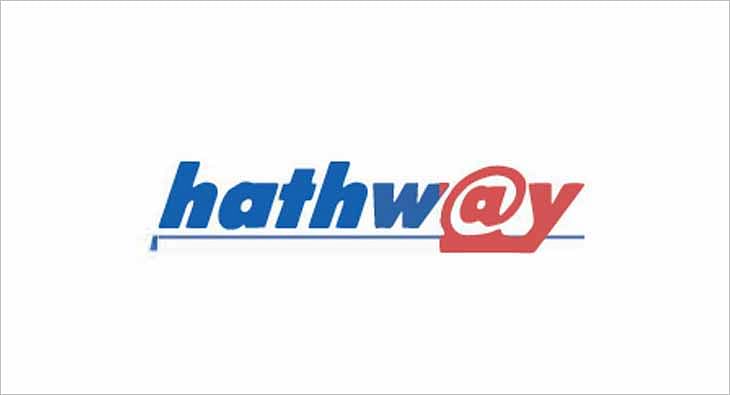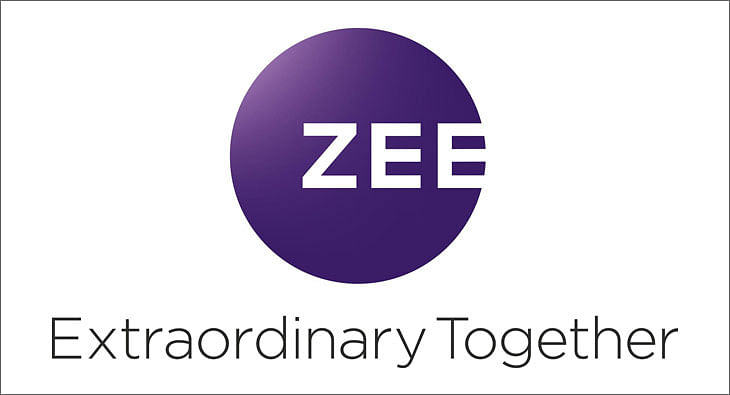Vivid: Anti-ethics practices of other kinds in media
Annurag Batra highlights aberrations in Indian media such as dishing out global news from a local office & excessive use of ‘Exclusive’

There are 37 points in Part A on ‘Principle and Ethics’ codifying the ‘Norms of Journalistic Ethics’ prescribed by the Press Council of India, the statutory body in India governing primarily the conduct of the print media. The norms are, as the Council says, relevant to radio and television journalism too.
A lot of the code of ethics is to be taken with a pinch of salt, not as much because they have been listed out or that they sound fantastic, but simply because the complex giant of an industry, called the Indian media industry, wouldn’t have evolved to be one had they been followed to the ‘T’. The media is regarded as the fourth pillar of democracy, keeping an eye on the other three – Legislature, Executive and the Judiciary. Had media been straight jacketed by the ethics’ code as given by the Council, democracy would not have had a fourth pillar.
William ‘Bill’ Bernbach from Bronx, who is remembered for ‘placing creative people in positions previously held by skilled but uncreative businessmen’, said: “All of us who professionally use the mass media are the shapers of society. We can vulgarise that society. We can brutalise it. Or we can help lift it onto a higher level.”
Bernbach died of leukaemia in 1982. Some years later, his wife Evelyn and Bob Levenson, the creative leader of DDB – the global advertising agency Doyle Dane Bernbach, of which Bernbach was a one of the three founders in 1949 – published a life sketch on the ad guru. “By the time I published Bill Bernbach's book: ‘A History Of The Advertising That Changed The History Of Advertising’ in 1987, we at DDB had long ago concluded that what happens to society would affect everyone with ever-increasing speed, and that the most powerful force in the world was and would be public opinion, requiring all of us in the communications business to persuade, not sell,” wrote Levenson.
Indeed, media in the modern society is quite like that. And it is up to the journalists too to lift the society onto a higher level.
But evolution seems to have come in the way, in terms of ethics vis-a-vis the august practice of reporting for the masses. As technology plays the role of a transformer for the media in India where news is what is relayed now, journalists have come under the excruciating pressure of deadlines, particularly with the advent of the electronic media. Delivery of news is no more a matter of hours but mere minutes.
In this kind of a scenario, and even as the media debates on the mode to stymie practices like paid news, fake news and sensationalism, we will take a look at some of the other malaise plaguing it.
Foreign copy, ‘desi’ desk
Question: Can you file a copy from London sitting in Delhi?
Answer: Yes you can, if you have no scruples about it.
You may find it hard to believe but many a stories you read in your morning newspapers datelined London, Washington, New York, Adis Ababa, Lobamba or Mbabane are actually ‘manufactured’ in busy newsrooms right here in the Capital city of one of the still-the-fastest-growing-economies of the world – India.
In fact, a Chief Copy Editor of a national news agency reveals that it has been his job for good two years to head the desk whose only mandate is to scour the net for fresh news and rewrite them and upload on the news creed for consumption. I was shocked and did not bother to hide my reactions. “Are you?” the Copy Editor asked and said, “Every agency does it in India. Look at the competition. If we don’t give you updated news round-the-clock, someone else will. What’s so shocking about it?”
“Don’t you attribute it to the source or at least insert in the copy where you get it from. Don’t you at least put the place line as New Delhi?” I asked, still unable to stomach it.
“Ummm too much of a ‘jhamela’, ya! Anyway putting a New Delhi place line for such articles would downgrade them,” was the prompt reply.
Can’t help but remember what senior journalist and former Press Council member, Paranjoy Guha Thakurta, said in his tenth Prof S Bashiruddin Memorial Lecture in Hyderabad earlier this year – Intense competition among newspapers and television news channels has lowered the ethical standards in the Indian media and that a provision for statutory regulation of the media will help improve the situation.
Till such time I guess the practice of a foreign copy from a ‘desi’ desk, complete with a foreign place line, will continue to be churned out.
Give me a break, that’s not ‘Exclusive’
This malaise is something the media itself has a hearty laugh at itself about. It’s not uncommon for you to find the same news of the day in several news channels, all claiming its exclusivity. The print media has been particularly bitter in criticising its electronic counterparts for screaming ‘Exclusive!’ at the drop of the hat.
A senior journalist from a well-known TV channel had this to say about his territorial rights on ‘Exclusive’: “We don’t go by the news item itself in claiming its exclusive but on the treatment we give it. We often have more on particular news than anyone of our competitors.”
He cited the recent Cabinet reshuffle as an example. “Everyone reported that it is likely, their studied and informed guess games, the faces and the portfolios. We claimed it as an ‘Exclusive’ because our sources in the government where more credible and confirmed than others. We got the reshuffle bang-on, even before it had happened!” the journalist said.
Be that as it may, news channels need to be a little more discerning when using the exclusive tag. Yes, the English channels have begun being more careful about it but their vernacular counterparts still suffer from the too-much-exclusive-syndrome. One feels that such a use (or misuse) is dictated by sensationalism, even at the risk of downgrading the tag itself. In smaller TV channels, even a love-triangle with a murder twist or a case of sexual assault becomes exclusive or even breaking. Now how does that justify the ethics of delivering news at all? While I understand the merit of reporting such stories, I do not see the reason why they should be hyped up, unless they are the likes of the Arushi case, the Guwahati sexual assault case or the Jessica Lall murder case.
The media must understand that overplaying and sensationalising every crime story – that’s what exclusive and breaking tags often do – creates moral panic which can go either uncontrolled way; that is, create mass hysteria or forge a spark a renewed sense of alert. Question is, are we ready to risk this double-edged sword and create a feeling that lacks a sense of security?
Ethics has a lot to do with self-control and self-realisation. For the media now, given its growth potential and the role it plays in the masses’ psyche, it is imperative to address even the aberrations, like the ones I mention here, that have become common practice. It’s a 360-degree approach, really, of stopping the media going graft-driven ways of the present society.
Read more news about (internet advertising India, internet advertising, advertising India, digital advertising India, media advertising India)
For more updates, be socially connected with us onInstagram, LinkedIn, Twitter, Facebook Youtube & Whatsapp
You May Also Like
HT Media posts Consolidated Total Revenue of Rs 580 crore in Q2
Chairperson and Editorial Director Shobhana Bhartia says due to lower commodity prices and control on costs there has been an improvement in operating profit
HT Media has posted a Consolidated Total Revenue for Q2, 2020 at Rs 580 crore.
As per a statement released by the company, EBITDA for Q2’20 increased by 139%, and margins at 14% vis-à-vis 6% in previous year. This has been driven by softening of newsprint prices and continued focus on cost.
The Net Cash position at a consolidated level continues to be strong.
The Print ad revenue has declined due to sluggish volumes, even as yields have improved. National advertising continues to be soft, although local advertising witnessed growth.
Savings in raw material costs have driven improvement in EBITDA margins.
Chairperson and Editorial Director Shobhana Bhartia said, “Slowing economic growth has hit advertising spends in key categories, putting pressure on revenues across the media industry. As a result, our Print and Radio (on like to like basis) businesses saw revenues dip as compared to a year-ago. However, thanks to lower commodity prices and a tight control on costs, we saw an improvement in our operating profit. On the digital front, Shine, our online recruitment portal has shown good progress and continues to grow. Our outlook for the coming quarter remains cautious, given overall economic sentiment and macroeconomic trends. Cost-control and falling commodity prices should help protect our margins.”
Read more news about (internet advertising India, internet advertising, advertising India, digital advertising India, media advertising India)
For more updates, be socially connected with us onInstagram, LinkedIn, Twitter, Facebook Youtube & Whatsapp
ABP Group posts Rs 15.70 crore as net profit in Q1 FY20
The group’s total operating income stands at Rs 365.55 crore
ABP Group has posted a net profit of Rs 15.70 crore in the first quarter of FY20, as per media reports.
The group’s total operating income stands at Rs 365.55 crore.
It’s net profit for the fiscal ended March 31, 2019, was down 68% to Rs 31.90 crore compared to the previous fiscal.
The Profit Before Interest Lease Depreciation and Tax (PBILDT) has also dropped 53.52% to Rs 107.12 crore.
The group has six news channels - ABP News (Hindi), ABP Ananda (Bengali) ABP Majha (Marathi) and ABP Asmita (Gujarati), ABP Sanjha (Punjabi) and ABP Ganga (Hindi).
Read more news about (internet advertising India, internet advertising, advertising India, digital advertising India, media advertising India)
For more updates, be socially connected with us onInstagram, LinkedIn, Twitter, Facebook Youtube & Whatsapp
Zee Media posts consolidated revenue of Rs 137.03 crore for Q2 FY20
ZMCL has recorded 4.4% growth in operating revenue for first half of FY20
Zee Media Corporation Ltd (ZMCL) has posted a 4.4 per cent growth in operating revenue to Rs 337.6 crore in the first half of FY20, as per media reports.
It has reported a consolidated revenue of Rs 137.03 crore for Q2 FY20.
In a statement, ZMCL has said: “During the quarter, the network expanded its footprint s into Southern India through the launch of Zee Hindustan in Tamil and Telugu languages. This is intended to make the network's content accessible to wider audience.”
The operating expenditure in Q2FY20 has dropped by 21.7 per cent.
The statement further said: “EBITDA for HlFY20 improved by 34.1 per cent to Rs 1,029 million from Rs 767.5 million EBITDA for H1FY19, while the same declined by 9.4 per cent to Rs 370.2 million from Rs 408.7 million for the corresponding period last financial year. EBITDA Margin grew from 23.7 per cent in H1FY19 to 30.5 per cent in HlFY20, while growing from 24.2 per cent in Q2FY19 to 27 per cent in Q2FY20.”
Read more news about (internet advertising India, internet advertising, advertising India, digital advertising India, media advertising India)
For more updates, be socially connected with us onInstagram, LinkedIn, Twitter, Facebook Youtube & Whatsapp
No slowdown here: In-cinema ad rates up by at least 50% for 3 big Diwali releases
Housefull 4, Made In China and Saand Ki Aankh ready to hit the silver screen this week, with the hopes of giving brands the eyeballs they look for in theatres
It’s that time of the year again when theatres gear up to pocket maximum gains. Diwali is here and there are three films ready to hit the silver screen this week--Housefull 4, Made In China and Saand Ki Aankh. The festive period brings much joy to exhibitors, distributors and theatre owners because it ensures footfalls, giving brands the eyeballs they look for. In fact, industry experts don’t feel that economic slowdown this year has impacted in-cinema advertising. While they are concerned about three movies clashing during Diwali, they predict 50-100 per cent rise in ad rates during this period.
Advertising moolah
Mohan Umrotkar, CEO, Carnival Cinemas, is expecting 60-70 per cent surge in advertisement topline compared to last year. “Going by the buzz and advance booking for these three releases, market is bullish. Advertisers have blocked most of the advt-slots during the festival period. Housefull 4, Made In China and Saand Ki Aankh all combined together should generate around Rs 350 crore topline at the box office during the festival week. We are expecting 60-70 per cent surge in the advertisement topline from last year. Also, this year we have added around 14 per cent new advertisers, and 4 per cent of them are first-time cinema advertisers,” he says.
But according to Siddharth Bhardwaj, Chief Marketing Officer - Head of Enterprise Sales, UFO Moviez, things have changed a lot in the last couple of years. “Since some films have not really lived up to their expectation, advertisers are spreading the spends all through the year. They are picking up far more number of titles in the year rather than focusing only on Diwali or Eid.”
“It is good for the industry because you can monetise the inventories beyond just big weeks. A lot of content- driven films have come up which has given us the opportunity to monetise more markets. It has put lesser pressure on Diwali. Most of the cinemas are sold out for Diwali. It becomes difficult to accommodate everything,” Bharadwaj opines. He also reveals that for this week, the inventories are already full.
Diwali ad rates
Experts reveal that ad rates differ from property to property and depends on location as well. But Diwali surely sees a massive hike in rates. This year, theatre owners are expecting 100 per cent rise in ad rates. While Umrotkar revealed that for Diwali, they are charging 100 per cent higher than the regular card rates, Girish Johar, trade analyst and film producer, shared that even the rates for putting up kiosks of brands go up during festivals like Diwali.
“It’s based on property. On a ballpark, ad rates double up. So if you are putting up a kiosk, they charge say Rs 50,000-25,000 for a month. During Diwali, they charge almost double because of the kind of footfalls theatres witness,” Johar revealed.
Economic slowdown? Not for Cinema!
This year, brands have been pulling back their spends on other mediums due to economic slowdown, but cinema seems unaffected. Calling entertainment business recession-proof, Johar explains, “If you see the other side, box office is up by 15-20 per cent. Yes, it is a bit subdued because the brands are in a wait-and- watch scenario. They are increasing their focus around consumption rather than awareness.”
Bharadwaj too seconded it by saying, “These are challenging times but our medium is very efficient. If you see economy has slowed down, but the cinema has grown instead.”
Clash cover
Three movies are clashing this Diwali which means shared screens and box office gains.
“It’s never good for us when two or more big-ticket films release together. If they would have come on different dates, there are chances that more advertisers will take advt. inventory in those weeks separately instead of that one particular week,” shares Umrotkar.
Read more news about (internet advertising India, internet advertising, advertising India, digital advertising India, media advertising India)
For more updates, be socially connected with us onInstagram, LinkedIn, Twitter, Facebook Youtube & Whatsapp
INOX Leisure Ltd sees 42% growth in total revenue
Profit After Tax up 327% to Rs 51 crore
INOX Leisure Ltd (INOX) has reported financials for the second quarter ending September 2019.
Its total revenue has risen to Rs 524 crore with a 42% growth from Rs 369 crore in the corresponding quarter in FY19. Its EBITDA has more than doubled to Rs 107 crore with a 121% growth, while the PAT stood at an impressive Rs 51 crore, up 327% from previous year’s second quarter.
Siddharth Jain, Director, INOX Group, said: “At INOX, setting new benchmarks is now a routine, thanks to our consistently sharp focus on luxury, service and technology and our uncompromised desire to offer our patrons, nothing but the latest and the best! We are delighted with our remarkable consistency on all parameters, and we are sure about maintaining the momentum and focus on innovativeness. Content once again proved that why we term it as the ‘hero’. Thanks to the creators of such spellbinding movies, which keep inviting our guests to our properties, and allowing us to pamper them with our signature hospitality. With the launch of Megaplex, we are delighted to further our endeavor of developing experience-driven cinema destinations of global standards, and we will continue to do so. On behalf of Team INOX, I assure all our stakeholders that we will continue to break barriers and exceed all expectations.”
Read more news about (internet advertising India, internet advertising, advertising India, digital advertising India, media advertising India)
For more updates, be socially connected with us onInstagram, LinkedIn, Twitter, Facebook Youtube & Whatsapp
Hathway Cable & Datacom reports 100% subscription collection efficiency in Q2
The broadband subscriber base has increased from the previous quarter’s 840,000 to 860,000
Hathway Cable and Datacom has reported subscription collection efficiency at 100%, and the broadband subscriber base has increased from previous quarter’s 840,000 to 860,000 in quarter ending September, as per media reports.
It has narrowed its consolidated net loss by 74% and the operating EBITDA has been reported 15% up to Rs 107.5 crore compared to Rs 93.1 crore a quarter ago.
The total income has dropped 2%, while the expenditure is down 6%.
In the financial results, the company has said the FTTH markets are leading growth in customer acquisition.
Read more news about (internet advertising India, internet advertising, advertising India, digital advertising India, media advertising India)
For more updates, be socially connected with us onInstagram, LinkedIn, Twitter, Facebook Youtube & Whatsapp
ZEEL posts 7.4% YoY growth in total revenue for Q2 FY20
ZEEL's domestic advertising revenue has grown 1.4% YoY in Q2FY20
Zee Entertainment Enterprises Limited (ZEEL) has reported a consolidated revenue of Rs 2,122 crore for the second quarter of FY20, recording a growth of 7.4% on YoY basis.
The Earnings Before Interest, Tax, Depreciation and Amortization (EBITDA) was recorded as Rs 692.9 crore with an EBITDA margin of 32.7%. PAT for the quarter was Rs 413.2 crore. The Profit After Tax (PAT) for the quarter was Rs 413.2 million, with a growth of 6.9% YoY.
During the second quarter, ZEEL’s consolidated advertising revenue grew by 1.2% YoY to Rs 1,224.7 crore. The domestic advertising revenues grew by 1.4% YoY to Rs 1169 crore.
ZEEL has posted 26.8% YoY growth in Q2FY20 domestic subscription revenue. ZEEL’s consolidated subscription revenue grew by 19.0% to Rs 723.5 crore during the quarter.
ZEEL’s total expenditure in Q2FY20 stood at Rs 1429.1 crore, higher by 9.9% YoY compared to Q2FY19.
While ZEE5 recorded a peak DAU (Daily Active User) base of 8.9 million in September 2019, ZEE5 users watched an average of 120 minutes of content on the platform in the same month.
During Q2 FY20, the television network had an all-India viewership share of 18.4%.
During the quarter, ZEEL’s international business revenue was Rs 208.2 crore. The advertising and subscription revenues for international business declined by 4.0% YoY and 21.5% YoY, respectively.
Zee Music Company has registered 7.1 billion views on YouTube in Q2.
Punit Goenka, Managing Director and CEO, ZEEL, said, “I am pleased with the performance we have exhibited during the quarter. Our entertainment portfolio continues to grow from strength to strength across all formats and maintained its leading position. Our television network has emerged stronger post the implementation of tariff order on the back of a strong customer connect and brand pull of its channels. ZEE5 continued to gain traction across audience segments and markets, driven by its compelling content library and expanding list of partnerships across the digital eco-system. This strong operating performance allowed us to deliver industry leading growth in both advertising and subscription despite the tough macro-economic environment. Domestic subscription growth of 27% has reaffirmed the value proposition our television network has built over the years. The impact of tariff order has now largely settled down and has brought increased transparency along with improved monetization. Our domestic advertising revenue growth, though significantly lower than historical trend, is higher than the industry growth. We have witnessed an improvement in ad spends through the quarter and we believe that the onset of festive season along with measures taken by the government will help revive the consumption growth.”
Read more news about (internet advertising India, internet advertising, advertising India, digital advertising India, media advertising India)
For more updates, be socially connected with us onInstagram, LinkedIn, Twitter, Facebook Youtube & Whatsapp




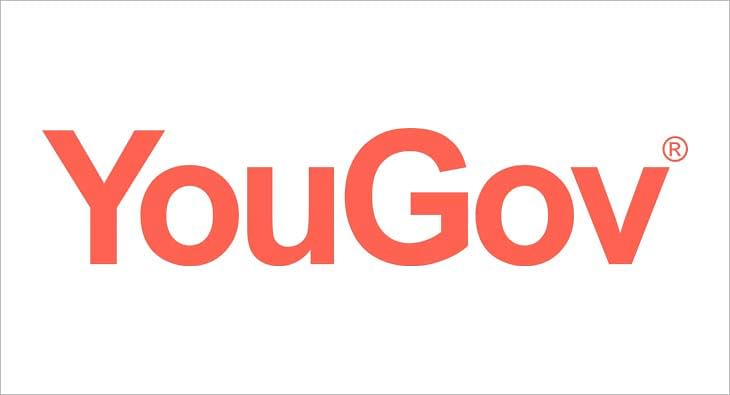
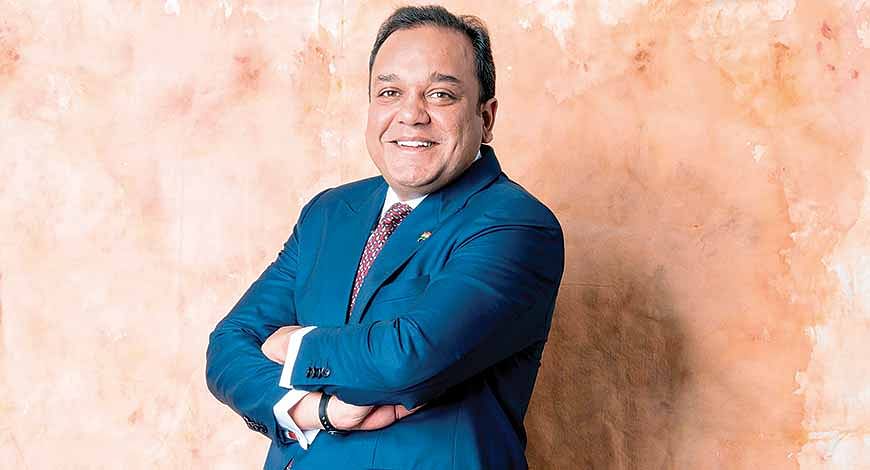
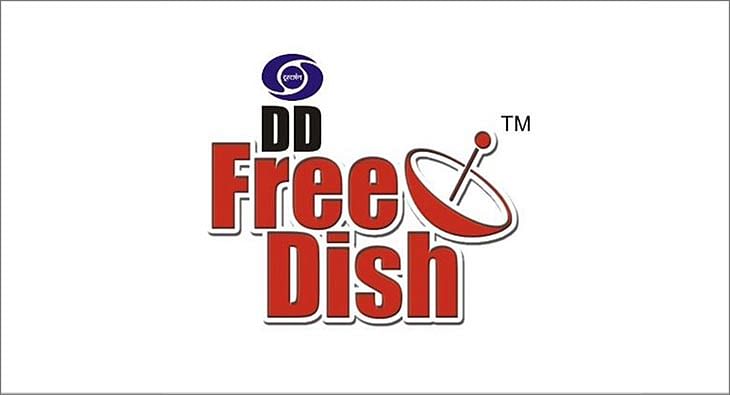







 Share
Share